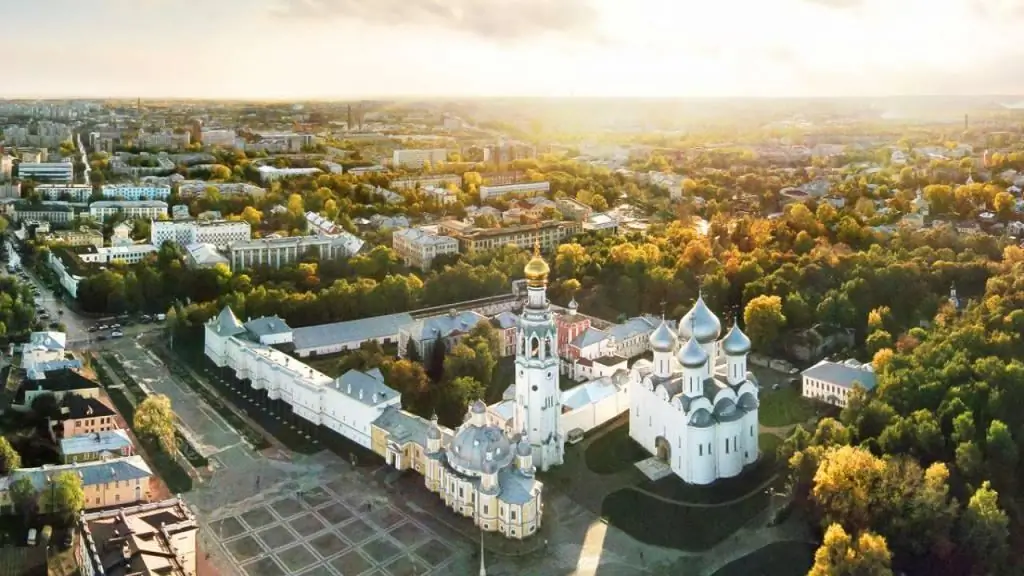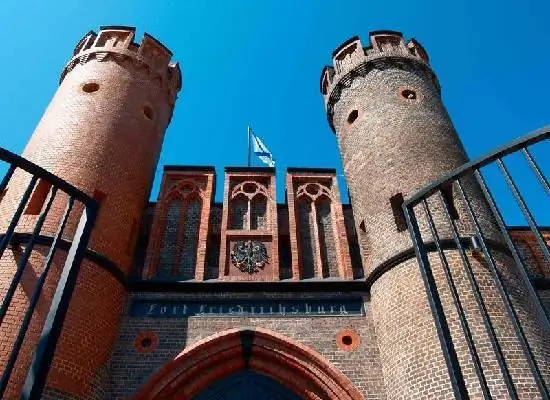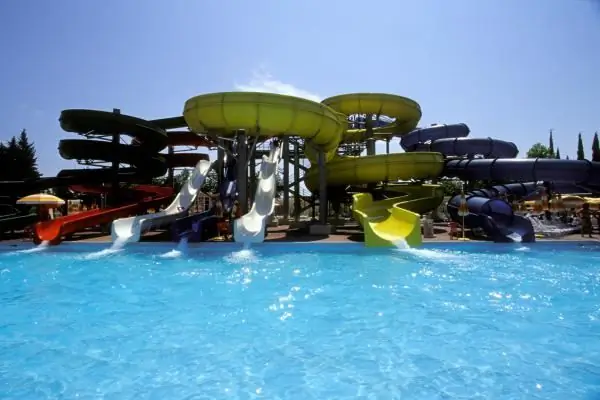- Author Harold Hamphrey [email protected].
- Public 2023-12-17 10:06.
- Last modified 2025-01-24 11:10.
In our article we want to talk about one of the most famous palaces in the world. Its luxury amazes to this day. The Palace of Versailles is an architectural monument located on the outskirts of Paris. He gained fame thanks to his fountains, gardens, unique interiors, as well as size, because the complex is considered the largest in Europe.
History of the castle
The Royal Palace of Versailles is only twenty kilometers from Paris. Its history began after Louis XIV visited the castle of his finance minister. The building impressed the monarch with its grandeur and scale. In beauty, it greatly surpassed the royal residences of the Tuileries and the Louvre. The Sun King took this fact painfully, and therefore decided to build a palace that would become a symbol of his absolute power. The monarch chose the city of Versailles not by chance. Shortly before this, France was shocked by the Fronde, so it would be imprudent to continue living in the capital.
Building a residence
The construction of the palace in Versailles began in 1661. Participated in the workmore than 30,000 people. To this end, the king forbade any private construction in and around Paris. In peacetime, even sailors and soldiers were sent to work. Despite the austerity, a lot of money was spent on the construction of the palace, although building materials were purchased at the lowest prices.

The royal family moved into the palace at Versailles in 1682, but the work didn't stop there. The complex was constantly being completed by adding new buildings. Work was carried out until the French Revolution of 1789. The palace was created in the Baroque style. Its first architect was Louis Leveau, who was later replaced by Jules Hardouin-Mansart. The planning of the palace and the park in Versailles was carried out simultaneously. The design of the parks was entrusted to André Le Nôtre. But the interior decoration of the building was led by the painter Lebrun.
The construction was very difficult. First, it was necessary to drain the marshy lands, filling them with soil, sand and stones. After the soil was carefully leveled, forming terraces. On the site of the former village, it was necessary to build a city where courtiers, guards and servants could live.
Shaping the Territory
In parallel with the construction of the palace in Versailles, work was underway to equip the surrounding area. Since Louis was called the "sun king", Le Nôtre decided to plan the alleys of the park in such a way that they resembled the rays of the sun diverging from the center. Initially, it was necessary to dig channels and build a water pipe, which was supposed to supply water to the fountains andwaterfalls. The work was not easy, as it was planned to build more than 50 ponds and fountains. In the course of the work, it became clear that the aqueduct, originally built, would not cope with the task. As a result, after numerous attempts, a hydraulic system was built, into which water fell from the Seine.
The fate of the palace
Louis XIV did not have time to finish his project. After his death, Louis XV and the entire court settled for a time in Paris. But seven years later, the king returned to Versailles, and later ordered to continue construction work.
The layout of the palace in Versailles has undergone significant changes, as the monarch decided to demolish the Staircase of the Ambassadors, which led to the Great Royal Apartments. Louis XV made such changes consciously in order to build apartments for his daughters. In addition, he completed all work on the opera hall. At the suggestion of his mistress, the famous Madame Pompadour, the Trianon Palace in Versailles was built.

In the last years of his life, the king began to reconstruct the facade of the palace. According to one version, work was to be carried out from the side of the courtyard, and according to another, the external facade was subject to restoration. The project was so massive that it was only completed in the last century.
According to historians, the palace was the place where the kings and their entire court rested in style and on a grand scale, here they weaved intrigues, created conspiracies. Such traditions were started by Louis XIV, and later they were continued by his descendants. The greatest scope was reached under Marie Antoinette, who was very fond of entertainment,intrigue and mystery.
Palace of Versailles
The total area of the palace without the park area is 67 thousand m22. The main palace in Versailles is the main building in which several generations of rulers lived. Officially, one could get into the castle through the main entrance, which was decorated with a cast-iron lattice with a golden royal coat of arms. In front of the main building, two pools lined with granite were created.
The royal chapel was erected on the right side. Its upper tier was intended for the monarch and his family, and the lower one for the courtiers. In the northern part of the building were the chambers of the king, and in the south - the rooms of the ladies-in-waiting.
In total, there are about 700 rooms in Versailles. The monarch received foreign ambassadors in the throne room with the beautiful name "Salon of Apollo". And in the evenings, musical performances and theatrical performances were held here.
One of the most significant rooms of the Grand Palace in Versailles is the Mirror Gallery. The most important receptions were held in it, for which a silver throne was installed. Balls and magnificent holidays were held here. The courtiers crowded in the gallery in the hope that the monarch would pass along it to the chapel and they would be able to petition him.

The mirror gallery has a special look. It has 17 window openings in the shape of an arch. They all face the garden. And between the windows there are mirrors that visually enlarge the room. In total, there are 357 mirrors in the gallery. The hall is distinguished by its high height (10.5 meters). Mirrorsopposite the windows give the impression that there are openings on both sides. Until 1689, the room was decorated with silver furniture. It was later melted down into coins.
Grand Trianon
The castle was built in classical style and decorated with pink marble. The building was used by the monarchs for a variety of purposes: for recreation during hunting or meetings with favorites.
Small Trianon
The palace was erected on the initiative of the Marquise de Pompadour, however, she died before the completion of the work.

The building is made in the style of transition from Rococo to Classicism. After the construction was completed, the favorite of the king, Countess Dubarry, lived here. After the accession to the throne of Louis XVI, the palace was transferred to Marie Antoinette. Within its walls she rested, even the king could not disturb her here. Subsequently, the queen built a small village near the palace with a mill and houses in accordance with her ideas about the life of the peasants.
Parks and gardens
Not only the interiors of the palace in Versailles are impressive, but also its gardens. The latter consist of a large number of terraces. In total, the park covers an area of about 100 hectares. An interesting fact is that it is completely flat.

It is simply impossible to find uneven terrain on its territory. Here are the Small and Big Trianon, the Belvedere, the Empress Theatre, the Temple of Love, the grotto, the French Pavilion, observation platforms, sculptures, alleys, canals, systems of fountains and reservoirs. The gardens of Versailles are sometimes even called little Venice.
Tough Times
The Palace of Versailles was the residence of monarchs for about a hundred years. But after the French Revolution of 1789, Marie Antoinette and Louis XVI were arrested and executed in Paris. After these events, the palace lost its political and administrative significance. It was looted, and many masterpieces of art were lost without a trace.

After Bonaparte came to power, Versailles was taken under protection, work began on its restoration. But the plans were not destined to materialize, as the empire collapsed. Versailles only benefited from this. The Bourbons returned to power, who began to actively restore the complex, and subsequently made it a museum. After the defeat of France in the war with Prussia, the German Empire was proclaimed in the Mirror Gallery. After some time, a peace treaty was signed here between the two countries. And after the end of the First World War, the French began to restore the castle. Over time, many of his valuables were returned.
Interesting facts
The palace was built at a fast pace, but at the same time, incredibly large-scale work was carried out. Hasty construction and lack of funds meant that many fireplaces in the building simply did not function, although they were built for the purpose of heating the premises. In addition, there were gaps in the doors and windows of the palace, which caused the wind to walk through the halls. The building was very cold for all its splendor.

And yet Versailles impresses with its scale. It's hard to imagine that once upon a timeof a stunningly beautiful complex were marshy swamps. In the shortest possible time, a palace and park ensemble appeared in their place, which became famous throughout the world.
The Palace in Versailles is the place that every tourist should see. The impressive complex leaves a lasting impression. Its walls have witnessed many palace intrigues and secrets. The palace is currently open to the public and is a museum.
Reviews of tourists
A visit to the palace in Versailles is an obligatory part of the program of any tourist. The palace and park ensemble is certainly impressive, although many believe that it cannot be compared with Peterhof. Still, such a large-scale structure is worth seeing. According to tourists, the complex should be viewed in the warm season, when the park takes on all its splendor. In winter and early spring, damp or cold weather makes it impossible to appreciate all its beauty. There are no lines at all in Versailles at this time, but you will not get the pleasure of visiting, besides, the fountains do not work at this time.
The ideal time to visit is May, summer and September. Tourists recommend choosing sunny, but not hot weather for the tour. In the high season, there are long queues near the palace, so it is better to go after lunch. In addition, you can purchase a ticket on the museum website with an indication of the entry time. This will prevent you from standing in line. Fountains do not work all days, their schedule is on the website. The palace and park complex is a unique sight, so it is definitely worth a visit.






